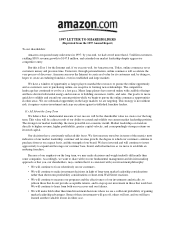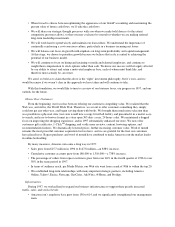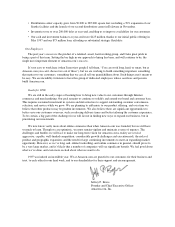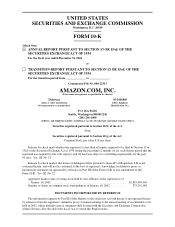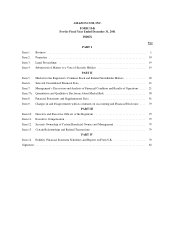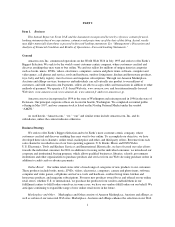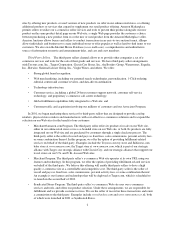Amazon.com 2001 Annual Report Download - page 15
Download and view the complete annual report
Please find page 15 of the 2001 Amazon.com annual report below. You can navigate through the pages in the report by either clicking on the pages listed below, or by using the keyword search tool below to find specific information within the annual report.expect that we may license in the future, certain of our proprietary rights, such as trademarks, patents,
technologies or copyrighted materials, to third parties.
Employees
As of December 31, 2001, we employed approximately 7,800 full-time and part-time employees. We also
employ independent contractors and temporary personnel on a seasonal basis. None of our employees are
represented by a labor union and we consider our employee relations to be good. Competition for qualified
personnel in our industry is intense, particularly for software-development and other technical staff. We believe
that our future success will depend in part on our continued ability to attract, hire and retain qualified personnel.
Additional Factors That May Affect Future Results
The following risk factors and other information included in this Annual Report should be carefully
considered. The risks and uncertainties described below are not the only ones we face. Additional risks and
uncertainties not presently known to us or that we currently deem immaterial also may impair our business
operations. If any of the following risks occur, our business, financial condition, operating results and cash flows
could be materially adversely affected.
We Have an Accumulated Deficit and May Incur Additional Losses
We have incurred significant losses since we began doing business. As of December 31, 2001, we had an
accumulated deficit of $2.86 billion and our stockholders’ equity was a deficit of $1.44 billion. We have incurred
substantial operating losses since our inception and, notwithstanding our recent performance in the fourth quarter
of 2001, we may continue to incur such losses for the foreseeable future.
We Have Significant Indebtedness
As of December 31, 2001, we had total long-term indebtedness under our 10% Senior Discount Notes due
2008 (the “Senior Discount Notes”), convertible notes, capitalized-lease obligations and other asset financings of
$2.16 billion. We make annual or semi-annual interest payments on the indebtedness under our two tranches of
convertible notes, which are due in 2009 and 2010, respectively. Beginning in November 2003, we will begin to
make semi-annual interest payments on the indebtedness under our Senior Discount Notes. We may incur
substantial additional debt in the future. Our indebtedness could limit our ability to obtain necessary additional
financing for working capital, capital expenditures, debt service requirements or other purposes in the future;
plan for, or react to, changes in technology and in our business and competition; and react in the event of an
economic downturn.
We may not be able to meet our debt service obligations. If we are unable to generate sufficient cash flow or
obtain funds for required payments, or if we fail to comply with covenants in our indebtedness, we will be in
default.
We Face Intense Competition
The e-commerce market segments in which we compete are relatively new, rapidly evolving and intensely
competitive. In addition, the market segments in which we participate are intensely competitive and we have
many competitors in different industries, including the Internet and retail industries.
Many of our current and potential competitors have longer operating histories, larger customer bases,
greater brand recognition and significantly greater financial, marketing and other resources than we have. They
may be able to secure merchandise from vendors on more favorable terms and may be able to adopt more
aggressive pricing policies. Competitors in both the retail and e-commerce services industries also may be able to
devote more resources to technology development and marketing than us.
6


